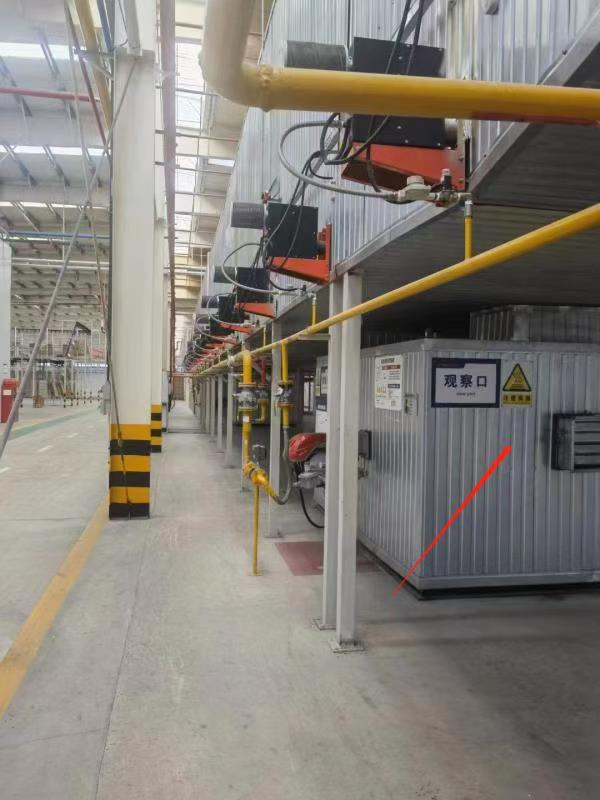The paint line drying tunnel heated by natural gas
Natural Gas–Heated Paint Line Drying Tunnel
Equipment Composition
-
Drying Tunnel Main Body: This is the core part of the equipment, usually a long, channel-shaped passage with multiple heating zones and ventilation systems inside. After being coated, workpieces are sent into the drying tunnel and conveyed along the conveying device (such as a hanging chain or roller conveyor) to complete the drying process.
-
Natural Gas Combustion System: This includes burners, gas pipelines, ignition devices, and control systems. The burners are installed in the heating zones of the drying tunnel and are connected to the natural gas pipeline to introduce natural gas into the combustion chamber for combustion, generating high-temperature hot air. The control system is used to precisely control the flow of natural gas and the combustion temperature to ensure a uniform and stable temperature inside the drying tunnel.
-
Conveying System: This is used to transport coated workpieces into the drying tunnel. Common conveying methods include hanging conveyors and roller conveyors. The hanging conveyor is suitable for irregularly shaped or large-sized workpieces, which are hung on the conveyor chain with hooks; the roller conveyor is suitable for flat workpieces, which are placed on the roller conveyor and conveyed by the rotation of the rollers driven by a motor.
-
Ventilation System: This includes air supply and exhaust devices. The air supply device evenly distributes the hot air generated by combustion into the interior of the drying tunnel to ensure uniform heating of the workpiece surface. The exhaust device is used to expel exhaust gases and volatile organic compounds (VOCs) from the drying tunnel, maintaining air quality inside the tunnel and also helping to regulate the temperature and humidity inside the drying tunnel.
Working Principle
-
Workpiece Enters the Drying Tunnel: After coating, the workpiece is transported into the entrance of the drying tunnel via the conveying system to begin the drying process.
-
Natural Gas Combustion Heating: The natural gas combustion system is activated. The burner mixes natural gas with air and ignites it to produce a high-temperature flame. The high-temperature flame transfers heat to the air through a heat exchanger, creating hot air.
-
Hot Air Circulation and Drying: The hot air is evenly distributed inside the drying tunnel through the air supply device and blown onto the surface of the workpiece, causing the solvent in the coating layer to evaporate quickly and accelerating the curing and drying of the coating. The workpiece is conveyed through the drying tunnel at a set speed and time to ensure that the coating is sufficiently heated in each zone.
-
Exhaust Emission and Treatment: During the drying process, volatile organic compounds and exhaust gases from the coating layer are expelled from the drying tunnel through the exhaust device. These exhaust gases are usually treated through purification methods such as activated carbon adsorption or catalytic combustion to reduce environmental pollution.
-
Workpiece Completes Drying: After a certain period of drying, the coating on the surface of the workpiece is fully cured and reaches the desired level of dryness. The workpiece is then transported out of the drying tunnel through the conveying system and enters the subsequent cooling and inspection processes.
Advantages
-
High Efficiency and Energy Saving: Natural gas is a clean and efficient energy source. The high and stable heat generated from its combustion can quickly raise the temperature inside the drying tunnel, shorten the drying time, and improve production efficiency. At the same time, the precise control system can effectively reduce energy waste and lower production costs.
-
Uniform Temperature: The hot air generated from the combustion of natural gas can be evenly distributed throughout the drying tunnel through the ventilation system, ensuring uniform heating of the workpiece surface and avoiding problems such as local overheating or uneven drying, which improves coating quality.
-
Good Environmental Performance: Compared with traditional fuel oil or coal-fired heating methods, natural gas combustion produces fewer pollutants and has a smaller environmental impact. In addition, the exhaust treatment system can further reduce the emission of volatile organic compounds, meeting environmental requirements.
-
High Safety: The natural gas combustion system is equipped with complete safety devices, such as leakage detection and flame failure protection, which can effectively prevent natural gas leaks and combustion accidents, ensuring the safety of the equipment and personnel.
Application Fields
The natural gas–heated paint line drying tunnel is widely used in industries such as automotive manufacturing, home appliance production, mechanical processing, and furniture manufacturing. In automotive coating production lines, it is used to dry the primer, intermediate coating, and topcoat of the car body. In the home appliance industry, it is used to dry the coating of the outer shells of refrigerators, washing machines, and other home appliances. In the fields of mechanical processing and furniture manufacturing, it is used to dry the coating layers of various mechanical parts and furniture surfaces, ensuring the quality and performance of the coatings.
联系我们了解公司信息和解决方案
工厂地址: 浙江省温岭市东部产业聚集区
飞机:台州路桥机场(1小时) 温州机场(2小时)
高铁:温岭站(40分钟)
高速路口:温岭北(15分钟)温岭东(20分钟)
Email: Assemblyline@qq.com












